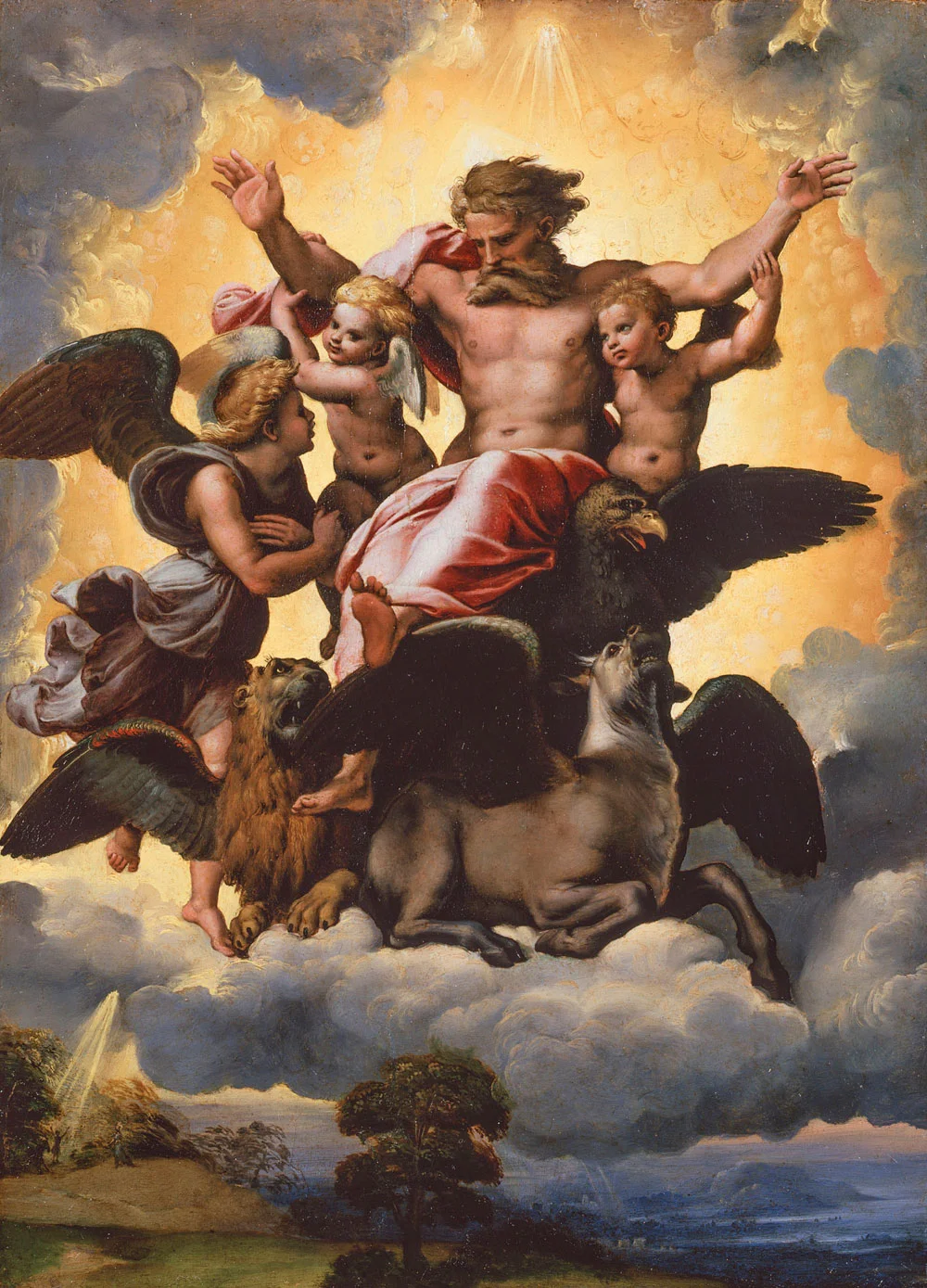Ezekiels first vision
One of my habits is to study a book of the Old Testament and a book of the New Testament at any given time. I translate the books from Hebrew or Greek, whatever the case may be, into English at the pace of about a verse or two a day, writing down my own translation into spiral notebooks. I try to read a few commentaries and books on my selected biblical books, as well as just think about them a lot, during the time it takes me to finish translating them. I like the slow methodical process of soaking in books of the Bible for months or years at a time. It gives a biblical shape to my thinking and hopefully is a step in the "renewing of the mind" that Paul talks about in Romans.
My current Old Testament book is Ezekiel. I’ve been at it for about two years, with about one year to go (Ezekiel has 1271 verses). Ezekiel is one of my favorite Old Testament books, because it is just so bizarre. He has these strange visions, but he is commanded by God to do even stranger things like creating a model siege of Jerusalem, laying on his side for huge amounts of time to symbolize the years of his people’s sins, cutting off his hair and burning it, chopping at it with a sword, scattering it to the wind and hiding some strands in his clothes, and other strange acts that serve as signs to the people of Israel in exile.
The vision that starts off the book is fascinating, and as bizarre as it seems I think it teaches us something very clear about God. To set the stage, here is Ezekiel a Levitical priest at the age that he would have been starting his service in the temple in Jerusalem, sitting in exile in Babylon. I’m sure the word discouraged doesn’t begin to cover his emotional state as he contemplates his personal loss and the situation of his people. They seemed abandoned by God in a foreign land and enslaved to a pagan king. Ezekiel is sitting by a canal when suddenly the heavens are ripped open and he sees God, but not even, because everything he says is qualified with "it was like" and "it seemed". He is grasping for words to describe a reality deeper than he understood. There was fire and movement and glowing and spinning and thunderous sound. It must have been terrifying. Ezekiel sees a flying chariot pulled by these multi-faced quasi-human part animal winged creatures. In the chariot, they were pulling sat "the appearance of the likeness of the glory of the LORD".
What is interesting about the creatures is the looked like the gods of Babylon. They had multiple wings with animal bodies and human-like faces. So, here are the gods of Babylon pulling the God of Israel’s chariot. They are his horses, his servant animals. Despite Israel’s exile there is a clear message that their God is on top. Even if it looks like he isn’t in control because his people were defeated by the Babylonians, he actually uses their so-called gods to pull his chariot. They aren’t on an equal plane with him. If he is a king, they aren’t rival kings, they’re beasts of burden waiting to do whatever he needs.
Ezekiel and his fellow Israelites would have wondered what was going on with their exile. Had their God lost? Was he still in control? The vision that Ezekiel sees gives a radical interpretation to what they would have been living. Despite what would seem like all evidence to the contrary, Yahweh was in charge and he hadn’t forgotten his people. He was and remains sovereign no matter what the world may look like and what the situation may be. We can rest assured because if we could just see behind the curtain and see things as they really are, our God is in control and his sovereignty is absolute, whether in Jerusalem or Babylon.

